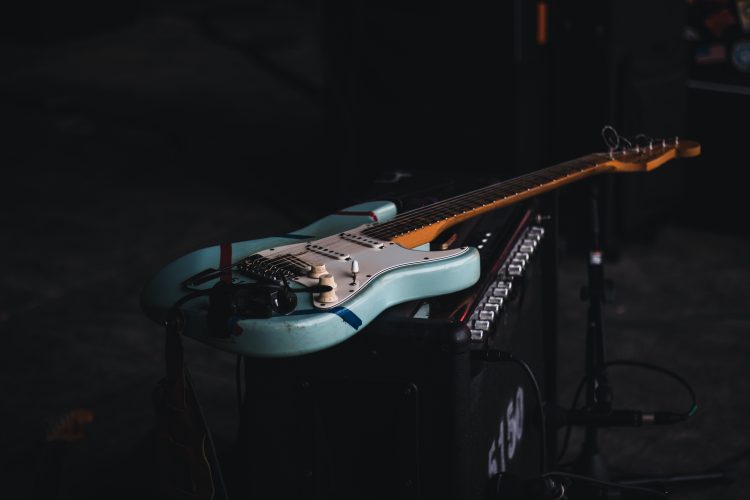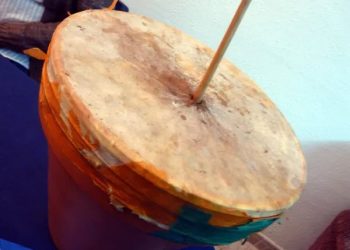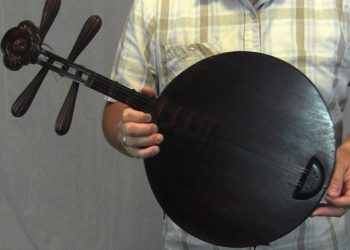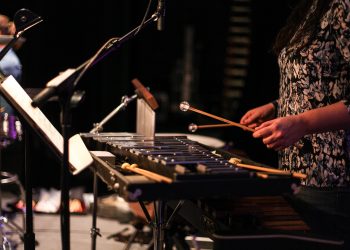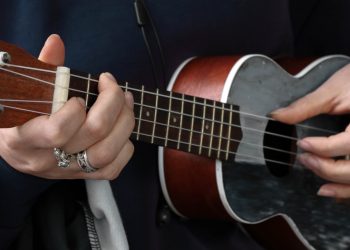Music is an integral part of human culture and has been for thousands of years. There are countless musical instruments out there that produce a variety of sounds, tones, and melodies that captivate listeners around the world. In this article, we will explore the top 16 musical instruments that start with the letter E. From the guitar-like sounds of the electric mandolin to the exotic sounds of the erhu, there are many instruments on this list that you may have never heard of.
Each instrument has a unique history and is associated with different styles of music, cultures, and traditions. The list includes both traditional instruments and more modern instruments that have gained popularity in recent years. We will discuss the origins and development of each instrument, their distinctive characteristics and features, and the different types of music that they are commonly used for. Whether you’re a musician or simply someone who enjoys listening to music, this article will provide you with an insight into the fascinating world of musical instruments that start with the letter E. So, without further ado, let’s dive in and explore these 16 amazing instruments.
1. Edakka
The Edakka is a traditional percussion instrument from Kerala, India. It’s an hourglass-shaped drum made of wood and has two heads covered in leather. The player holds it with one hand while striking its surface with the other hand using sticks or fingers. Its sound is unique and quite different from other drums due to its distinct shape and design.
Playing the Edakka requires skill as well as practice. There are several techniques used when playing this instrument such as finger tapping, slapping and beating. Different rhythms can be created by varying the speed of these techniques. Additionally, there are various ways to hold your hands to produce different sounds on the Edakka; this includes changing the angle at which you strike each head of the drum or hitting both sides simultaneously for a more sustained sound.
The music produced on this instrument is often used in classical Indian dance performances, but it can also be heard in folk songs and religious ceremonies throughout southern India. This type of percussion adds depth and complexity to any composition that uses it, creating a powerful dynamic effect that few other instruments can achieve.
This ancient musical tradition continues today; experienced players still use their skills to pass down knowledge about how to play the Edakka through generations so that future musicians may appreciate its beauty and versatility.
2. Eesti Torupill
The Eesti Torupill, or Estonian bagpipe, is a unique instrument that is native to Estonia. It’s made from sheepskin and consists of two parts: the toru (tube) and pill (bag). The tube has several holes which allow air to pass through it, while the leather bag stores air so it can be released when playing. To play this instrument properly, one must use their fingers and/or breath control to stop or start notes by controlling the flow of air in different ways.
Although these traditional instruments have been around for centuries, they are still used today mainly at folk music festivals throughout Estonia. Its sound adds an interesting texture to any composition as its tone is often described as being “whistling-like” due to how air passes through the instrument. Additionally, some players will even add vocal sounds into their performances using techniques such as humming or singing along with their playing.
Estonian bagpipes require a great deal of skill and practice in order to master them; experienced players dedicate many hours perfecting their craft so they can create beautiful melodies. This type of musical tradition brings together people from all walks of life who share a passion for music regardless of their background or experience level. As such, anyone interested in learning about this unique instrument should take advantage of opportunities to listen to those who have dedicated years mastering this wonderful art form.
The Eesti Torupill allows musicians from all over the world to come together and appreciate its beauty and complexity through performance – something that few other instruments can offer!
3. Egg Shaker
Moving away from the bagpipe and into a more accessible instrument, let’s take a look at egg shakers. Often used in music education settings, these small percussive instruments are incredibly versatile and relatively easy to learn how to use. With their simple design consisting of two halves of an eggshell filled with beads or granules that create a rattling sound when shaken, they can be added to any musical composition for an interesting effect.
Not only are egg shakers great for creating unique percussion sounds, but they also provide teachers with the opportunity to introduce rhythm concepts such as pulse and subdivision. These concepts can then be reinforced through activities like having students play together while counting out beats or clapping rhythms. The possibilities are endless!
Moreover, because of their lightweight construction and low cost, egg shakers do not require much maintenance on the part of the player which makes them perfect for anyone looking to expand their instrumental toolkit without breaking the bank. Plus, there is no need to worry about getting too loud – since these instruments are meant to be played quietly – so it’s possible to practice or jam with other people without worrying about disturbing nearby neighbors.
Egg shakers offer an exciting way for aspiring musicians to explore rhythm in detail and add layers of texture to songs without making too much noise (or spending too much money). This makes them an ideal choice for those who want something portable and affordable that still provides plenty of creative potential.
4. Eight-String Guitar
Having looked at the egg shaker, let’s now explore a more traditional instrument: the eight-string guitar. This unique variation of the classic six-string model has become increasingly popular in recent years due to its versatility and range of tones that can be produced. With two additional strings, it allows players to create complex chords and melodies that would otherwise not be possible on a standard guitar.
The extra strings also provide added sonic possibilities such as allowing for alternate tunings or layering different sounds together. Additionally, they give musicians access to low notes that are difficult to achieve with just six strings; creating an opportunity for deeper sonic exploration. Not only does this increased range make them perfect for solo performances but also open up new avenues when writing music and arranging songs.
In addition to their sound capabilities, eight-string guitars offer several advantages when compared to regular models. For example, because there’s no need for two separate sets of tuning pegs (one set per string pair), these instruments tend to have much lower action than conventional guitars resulting in better playability and faster playing speeds – great news for those who want to shred!
Altogether, eight-string guitars present a great option for anyone looking to expand their musical horizons without having to learn an entirely new instrument from scratch. Whether you’re a beginner looking for something easy yet powerful or an experienced player wanting more creative control over your music, this is definitely worth considering.
5. Ektara
Continuing our exploration of musical instruments, let’s now turn to the ektara. This single-stringed instrument is a popular choice for folk music and Sufi devotional songs across South Asia and East Africa, as well as being used in some Western styles such as blues and jazz. It has a unique sound that can be adjusted through various playing techniques – from fast strumming to slow slides – allowing musicians to express a wide range of emotions with just one string.
The most obvious feature of the ektara is its size; it’s small enough to fit comfortably into any musician’s hands while still producing an impressive volume. Because of this, it’s often seen accompanying singers or soloists who don’t have access to bigger drum sets or percussion kits. That said, it also stands out on its own when played by itself – offering versatility and complexity rarely found in other similarly sized instruments.
It goes without saying that many players find the ektara incredibly enjoyable to use. Its light weight makes it easy to carry around, while its low maintenance requirements ensure that you won’t need more than basic tune-ups every once in awhile. Additionally, its simple design allows even novice players to get started quite quickly – perfect for those wanting an accessible way into learning about traditional music!
All things considered, the ektara is certainly worth considering if you’re looking for a versatile yet compact addition to your repertoire. With its ability to generate diverse sounds ranging from delicate plucks to thunderous notes, there’s no doubt it will add plenty of colour and expression wherever it’s used!
6. Electric Bass Guitar
Having looked at the ektara, let’s move on to a more modern instrument – the electric bass guitar. An essential component of many genres and styles, this four-stringed instrument has been used by both amateur musicians and professionals alike since its inception in the 1950s. Its low frequency range makes it ideal for laying down funky rhythms or providing solid foundations for other instruments to build upon – no wonder it’s become so popular!
Unlike acoustic guitars, electric bass guitars don’t require as much effort when playing. Their strings are thinner than regular guitar ones, meaning you won’t have to press down too hard with your fingers in order to get a clear tone. Additionally, their pickups provide an amplified sound that can be heard over even loud drums and percussion – making them perfect for live performances.
A major advantage of using an electric bass is its versatility; while they usually feature either 4 or 5 strings (most commonly 4), some models come equipped with additional features such as effects pedals which allow players to explore different sounds and notes. Moreover, there are countless different techniques available for exploring new musical avenues – from slapping and popping to advanced fingerstyle techniques like tapping and hammering-on/pulling off.
In short, adding an electric bass guitar into your setup is certainly worth considering if you want to take your music up a notch! With its unique capabilities, whether played solo or alongside other instruments, it provides endless possibilities for creative expression – ensuring you’re never stuck with just one sound ever again!
7. Electric Guitar
Continuing our exploration of electric instruments, let’s take a look at the electric guitar. This iconic instrument has been at the heart of popular music for decades and is heard in genres ranging from rock to jazz to country. It’s no wonder that it remains one of the most widely used instruments today!
The sound produced by an electric guitar is distinct from that of other stringed instruments due to its ability to be amplified. As such, players can use effects pedals and other devices to create unique sounds through distortion or reverb – something which acoustic guitars simply cannot do. Additionally, because they don’t require as much effort when playing, electric guitars are ideal for both beginner and experienced musicians alike.
Unlike bass guitars, electric guitars usually have six strings (although some models may come with seven). The combination of these strings allows for more complex chords and melodies than would otherwise be possible on a four-stringed instrument. Furthermore, while many people focus on rhythm techniques like strumming or picking, there are also advanced techniques available such as tapping or hammering-on/pulling off – perfect for soloing over riffs or creating intricate melodic lines.
All in all, electric guitars offer plenty of potential for self-expression; whether you’re just starting out or looking to refine your skills, this versatile instrument should definitely not be overlooked! With its wide range of tones and capabilities, it’s easy to see why it continues to remain so popular amongst musicians across all genres.
8. Electric Piano
Moving on, let’s take a look at the electric piano. As its name implies, this instrument is simply an electronic version of the classic acoustic piano we all know and love – but with some distinct advantages. For starters, it uses strings or pads to produce sound instead of hammers hitting metal strings like regular pianos do. This can be advantageous for those looking for more nuanced control over their sounds since you have greater flexibility when programming different tones. Additionally, because they don’t need to be tuned regularly (like acoustic pianos), electric keyboards are much easier to maintain over time!
Another great thing about electric pianos is that they can come in various sizes and configurations, making them perfect for both studio recording and live performances alike. From large 88-key versions with weighted keys to smaller MIDI controllers without any physical keys at all; there’s something out there for everyone. Furthermore, many digital models also offer additional features such as built-in effects (reverb/delay) or drum loops which make jamming along even more fun!
On top of these benefits, electric keyboards typically cost less than traditional acoustic ones – making them ideal if you’re just starting out or working on a tighter budget. Of course, no matter what your skill level is, having access to such a wide variety of instruments opens up plenty of creative possibilities too! With so much potential available at your fingertips, why not give the electric piano a try?
No doubt about it: Electric pianos are versatile tools capable of producing beautiful music regardless of whether you’re playing solo or in a band setting. Their range of sounds and accessibility make them beloved by musicians everywhere – from beginners all the way through professionals. So go ahead and explore what these amazing instruments have to offer – you won’t regret it!
9. Engalabi
Having explored the electric piano, it’s time to move onto something a bit more exotic. The Engalabi is an ancient African string instrument still played today by some cultures in West Africa and Madagascar. It consists of two strings that are plucked with the fingers or thumb while being tuned using small pegs along one side of the body.
The sound this instrument produces is truly unique; its tone warm, mellow and resonant – perfect for creating mesmerizing melodies! But what really stands out about Engalabis is their versatility when it comes to playing styles. For example, you can use either fingerpicking techniques or strumming patterns depending on the type of music you want to play – making them great for both solo performances as well as accompanying other instruments like drums and flutes.
Another great thing about this traditional instrument is how easy they are to transport and setup; all you need is your hands (and maybe a few tuning pegs). And since they don’t require any electricity at all, there’s no worry about finding power outlets or lugging heavy equipment around from gig to gig. Plus, you’ll be able to go acoustic whenever inspiration strikes without having to mess with wires or settings!
For those who take up the challenge of learning how to play the Engalabi, there will never be a shortage of creative possibilities waiting for exploration. From crafting intricate rhythms and arpeggios to experimenting with unusual harmonies – this humble instrument offers endless opportunities for musical expression. So if you’re looking for something new and inspiring then why not give it a try?
10. Enkelharpa
If you’re looking for something a little different from the Engalabi, then why not try an Enkelharpa? This traditional Scandinavian instrument is similar to its African counterpart but with some distinct differences. Unlike the Engalabi, which has two strings, the Enkelharpa has three – and each one can be tuned separately by moving pegs along the neck of the instrument.
The sound produced by this harp-like contraption is truly unique and captivating; its tones range from soft and ethereal chords to lively strums that transport listeners into another world. But what really sets it apart is its ability to create a wide variety of musical textures at once – thanks to having three strings instead of just two! From intricate countermelodies to full chord progressions, there’s no limit to what can be achieved on this remarkable instrument.
Another great thing about playing Enkelharps is their portability; they’re lightweight enough to carry around in your hands or bag so you can practice anywhere. Plus, since they don’t require any electricity, there’s no need for bulky amplifiers either! All you need are your fingers and creativity – giving you plenty of opportunities for spontaneous jam sessions anytime inspiration strikes.
Whether you want to explore ancient folk melodies or modern improvisations – the possibilities with this enchanting instrument are endless. So if you’re up for a challenge and ready to embark on a creative journey, then an Enkelharpa may be just what you need!
11. Epinette Des Vosges
The Epinette des Vosges is a delightful string instrument that has been delighting audiences for centuries. As its name implies, this traditional French folk instrument hails from the forests of the Vosgues mountain range – and it’s still just as popular today! With its distinctive sound and unique set-up, it’s no wonder why so many people find themselves drawn to this incredible instrument.
For starters, the Epinette des Vosges stands out in terms of its look; its bright yellow color and intricate carvings make it an eye-catching addition to any ensemble. Its body consists of several thin layers of wood which are then glued together, giving it a hollow resonance when played. And while there are only five strings stretched across its frame (unlike most other instruments with six), each one produces a distinctively vibrant sound – creating a wide range of tones and timbres.
In terms of playability, the ease at which one can learn how to play the Epinette des Voses makes it ideal for both beginners and experienced players alike. Not only does the lack of extra strings mean that fewer chords need be learned but also that strumming patterns come more naturally compared to other instruments. Plus, since many pieces written for this instrument involve simple melodies and fingerpicking techniques rather than complex arpeggios or riffs, even those who may not have practiced extensively before can quickly pick up on playing songs they love!
All in all, whether you’re looking for something new to pick up or simply want to add some variety into your repertoire, the charming Epinette des Voses could be exactly what you need! With its captivating design and inviting sounds, anyone would be hard pressed to resist trying their hand at this lovely little musical treasure.
12. Erhu
Continuing our exploration of unique musical instruments, we turn now to the erhu – a two-stringed Chinese instrument that has become an integral part of traditional Chinese music. Often referred to as the “Chinese violin,” this instrument is known for its versatility and captivating sound.
The erhu’s construction consists of a curved bamboo neck covered in snakeskin and supported by two metal tuning pegs. Its strings are stretched across the top of a wooden box which acts as both body and resonator. The player then holds the instrument between their legs while manipulating it with both hands; one hand plucks the string while the other moves along the length of it, producing different pitches depending on how far up or down they go.
In terms of its sounds, the erhu produces hauntingly beautiful tones that have been described as “tearful” and “soaring.” Because you can produce vibrato simply by shaking your left hand away from your body (as opposed to using more complex techniques like bending notes), even beginners can quickly learn to make full use of what this instrument has to offer musically.
Moreover, there’s something incredibly special about the way these strings interact with each other: when played together, they create a mesmerizing blend of dissonance and harmony that truly sets them apart from any other type of instrument out there. Even if you don’t know how to play it yourself, just listening is enough to get lost in its ethereal beauty!
With its enchanting tone and ease-of-playability, it’s no wonder why so many people around world find themselves drawn towards this remarkable instrument. Whether one chooses to play solo pieces or join forces with others in ensembles, rest assured that learning how to master this unique piece will bring plenty hours of joyous discovery!
13. Erxian
The Erxian is a traditional Chinese bowed string instrument. It consists of two components: the body, which looks like a large gourd and has four strings attached to it; and the bow, which is strung with horse hair. The sound produced by the Erxian is unique among musical instruments, as its tone ranges from quiet and tender to loud and powerful.
As one of the oldest known string instruments in China, the Erxian dates back over 2,000 years ago. Over time, it developed into various shapes and sizes depending on region or culture – some versions are even shaped like dragons! Many famous musicians have played this instrument throughout history, such as Guo Chuang during the Tang dynasty period (618-907).
Due to its delicate design and sound quality, playing the Erxian requires advanced techniques that can take many years to master. It’s important for players to use their fingers correctly while also manipulating the bow pressure and speed accurately in order to achieve desired tones. Additionally, specific sounds can be produced by changing positions between finger plucking and bowing techniques.
Today, there are several different types of Erxians available for purchase ranging from student-level models made from wood or plastic all the way up to professional-grade ones crafted out of more expensive materials like ebony or rosewood. No matter your skill level or budget constraints, you’re sure to find an Erxian suitable for your needs if you look around enough!
14. Esraj
The Esraj is a beautifully crafted string instrument originating from India. It’s similar to the Erxian, with four strings and a bow attached to an oval-shaped body; however, it has frets on its neck which give it greater tonal range. Its sound is soft yet resonant, making it ideal for playing slow melodies or gentle improvisations.
Like many other musical instruments, mastering this one also requires years of practice and dedication. Players must learn how to use their fingers in coordination with the bow while manipulating pressure and speed appropriately – all this while taking into account the fret positions that change tones as well! Needless to say, those who are able to play the Esraj flawlessly have impressive skills that only come with time and effort.
Fortunately, there are plenty of resources available today for aspiring players including recordings by professional musicians and instructional videos online. Additionally, if you’re looking for an Esraj but don’t want to break the bank, there are more affordable versions made from plastic or wood as well.
Regardless of your background or experience level, learning how to play the Esraj can be incredibly rewarding! With enough patience and determination, you’ll soon be able to create beautiful music worthy of any audience.
15. Esterilla
Moving on from the Esraj, we come to another stringed instrument – the Esterilla. This fan-shaped traditional Spanish guitar is often used in flamenco music and has a distinct sound that resonates with fiery passion. It features three double strings made of steel or nylon which produce a unique vibrato when plucked.
Unlike its Indian counterpart, playing the Esterilla requires more coordination between an individual’s hands and fingers. As you strum each string, your thumb and index finger have to be pressed together in order to create different tones and rhythms. Furthermore, this instrument also relies heavily on technique and speed – as it can only reach its full potential if performed at just the right tempo!
If you’re looking for something new to learn, give the Esterilla a try! With practice and dedication, you’ll soon be able to perform all kinds of musical pieces – from romantic ballads to upbeat jigs. What’s more, there are tons of online tutorials available so getting started shouldn’t be too difficult either. All that’s left now is for you to grab a pick and start strumming away!
16. Euphonium
Now, let’s take a look at another brass instrument – the euphonium. This tuba-like instrument is often used in concert bands and orchestras to add depth to melodies with its rich, mellow sound. It has four valves which are pressed down in various combinations to produce different notes and chords.
The euphonium also requires great breath control as it needs frequent air supply while playing long passages of music. Additionally, it takes some time getting used to the correct fingerings needed for certain tones; this can be a tricky process but once you have mastered it, you’ll be able to play more complex pieces with ease!
Playing the euphonium will give you an entirely new appreciation for classical music – from soaring symphonies to dramatically intense pieces. Whether you’re looking for something gentle or powerful, this instrument can certainly deliver a wide range of musical styles that will keep your audience captivated throughout each performance. So why not pick up one soon and start exploring all the possibilities?
